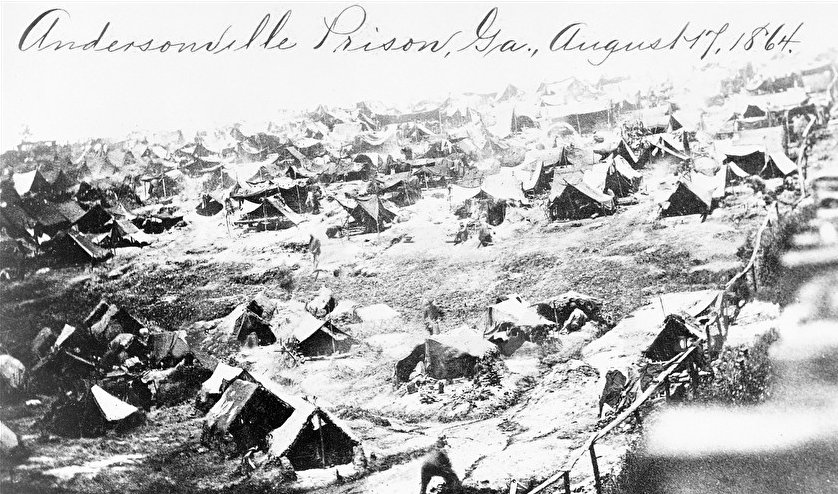
~ Click on pictures for a larger image ~
|
|
The Prisoners of War Andersonville Georgia |
. |

By the winter of 1863-64 the Confederacy was near the last of its resources and manpower. Knowing this, Union General Ulysses S. Grant refused to continue the prisoner-exchange agreement that had been in operation during most of the war. This action cut down on the number of Confederate soldiers Grant's army would have to face in the coming campaign, but it also meant death to a great number of Union prisoners who would otherwise have been exchanged. |
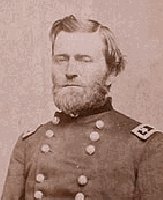
|
The number of Union soldiers held near Richmond had swelled with the breakdown of prisoner exchange agreements, posing a threat to the Confederate capital's security and taxing Virginia's already limited resources. The concentration of war prisoners in Richmond, Va., drained the local food supply and was a source of danger should the Yankees attack.
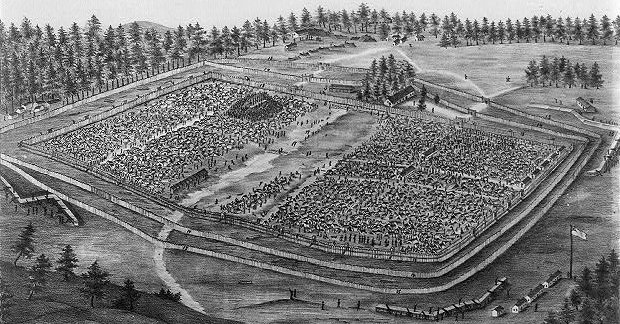
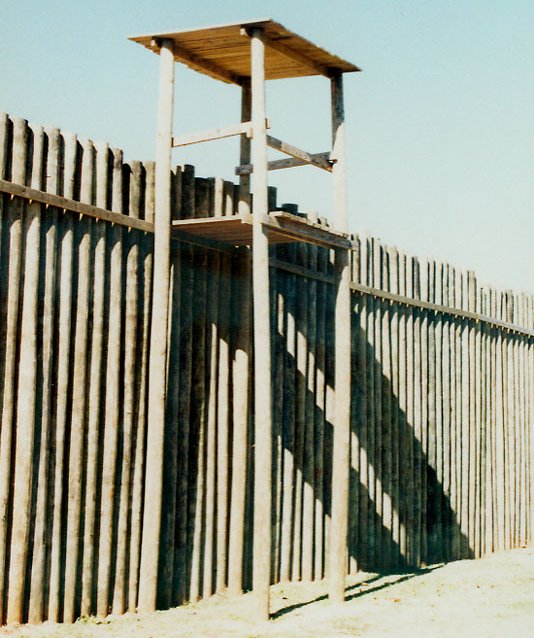
To relieve the burden, a new prison site was selected in the heart of Georgia, near the village of Andersonville in Sumter County. The prison was officially named Camp Sumter. When the first prisoners arrived in late February 1864, they found 16.5 acres of open land enclosed by a 15 foot tall stockade. The not yet completed prison provided little in the way of housing, clothing, or medical care. The only fresh water was a stream that flowed through the prison yard, with the downstream end serving as the camp latrine. During the next few months, 400 more prisoners arrived each day, and in June the prison was expanded to 26 acres. By then there were 26,000 men enclosed in an area intended to hold 10,000. By August the prison contained more than 32,000 Union prisoners.
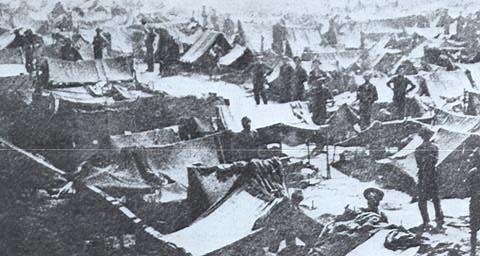
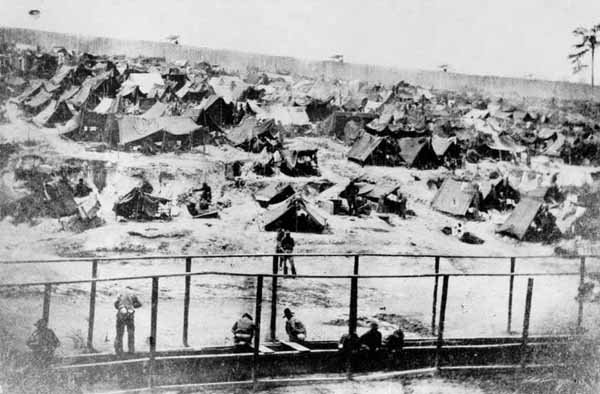
With the South barely able to feed its own men, the prisoners, who were supposed to get the same rations as Confederate soldiers, starved-receiving rancid grain and perhaps a few tablespoons a day of mealy beans or peas. The poor food and sanitation, the lack of shelter and health care, the crowding, and the hot Georgia sun all took their toll in the form of dysentery, scurvy, malaria, and exposure.
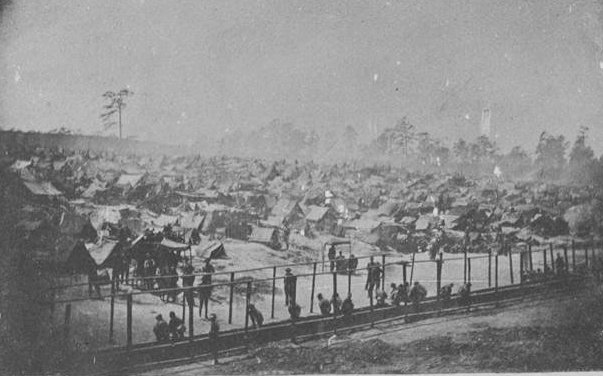
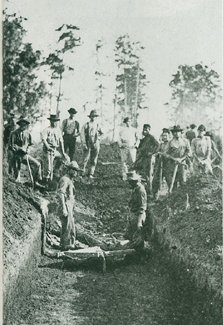
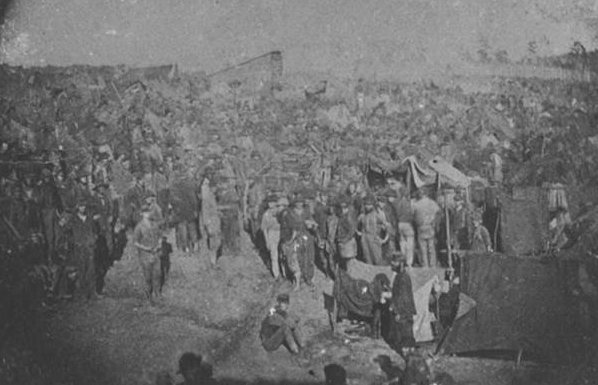
During the summer months, more than 100 prisoners died every day. Others fell victim to thieves and marauders among their fellow captives. The desperate situation led a Confederate medical commission to recommend relocating those prisoners who were not too ill to move, and in September 1864, as William T. Sherman's advancing army approached, most of Andersonville's able-bodied inmates were sent to other camps.
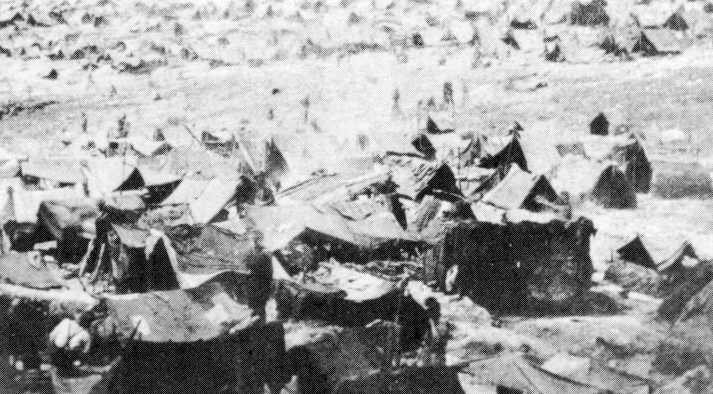
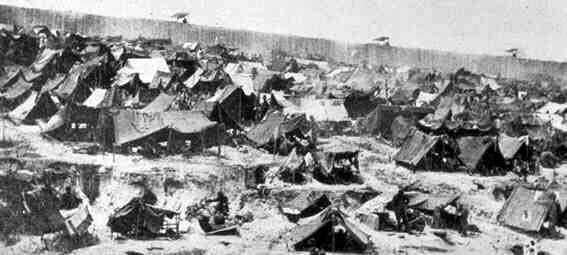
Remaining in operation until the end of the war, Andersonville held more captured Union soldiers than any other Confederate camp, a total of more than 45,000, nearly 30 percent of whom died in captivity. The North had learned of the camp's appalling conditions well before the emaciated survivors were released in 1865, and outraged citizens urged retribution on Southern prisoners of war. That was hardly necessary: the Union had its own wretched prison camps, including Elmira, New York, where the death rate approached Andersonville's, even though the North was far better equipped to cope with captured soldiers. Mismanagement and severe shortages were more to blame for the horrors of Andersonville than any deliberate attempt to mistreat prisoners.
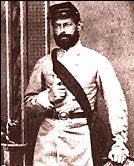
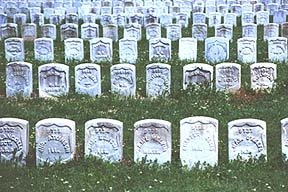

Capt. Henry Wirz Graves Clara Barton
HOME |